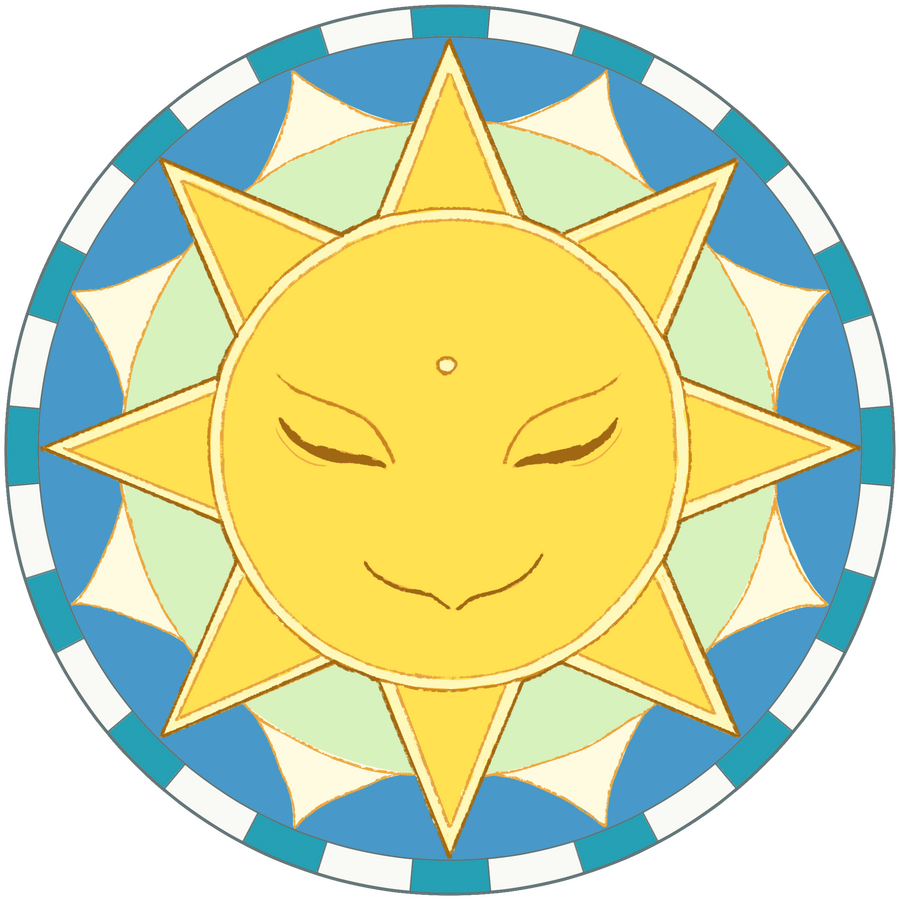The interior of the cave is cool and dry in contrast to the outside noon. The sun at the centre of the faded mural smiles serenely, though you glean from it a sense of concealed rage. A molten core. While the colours can only hint at the original fluorescence, the longer you investigate the intricate patterns, the stronger the image whispers of the past lives that gave birth to it.

About
My name is Eri - I'm a former academic sociolinguist, artist-in-making, and world builder looking for her tribe. Experimenting my way through a creative practice that combines world building, writing, and art in the pursuit of exploring our own complex world.
Bluesky - Unpolished streams of thought, logs of illustration work in progress.
Write.As - Experiments in writing on world building.
Academic Publications - List of academic linguistic publications in the areas of sociolinguistics, and comparative linguistics
Eri Kashima, 2025. Site created via Carrd.
